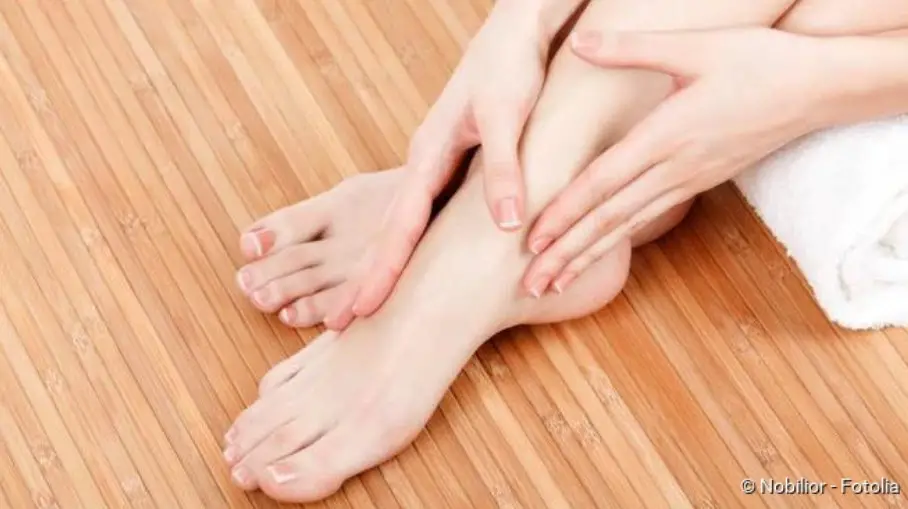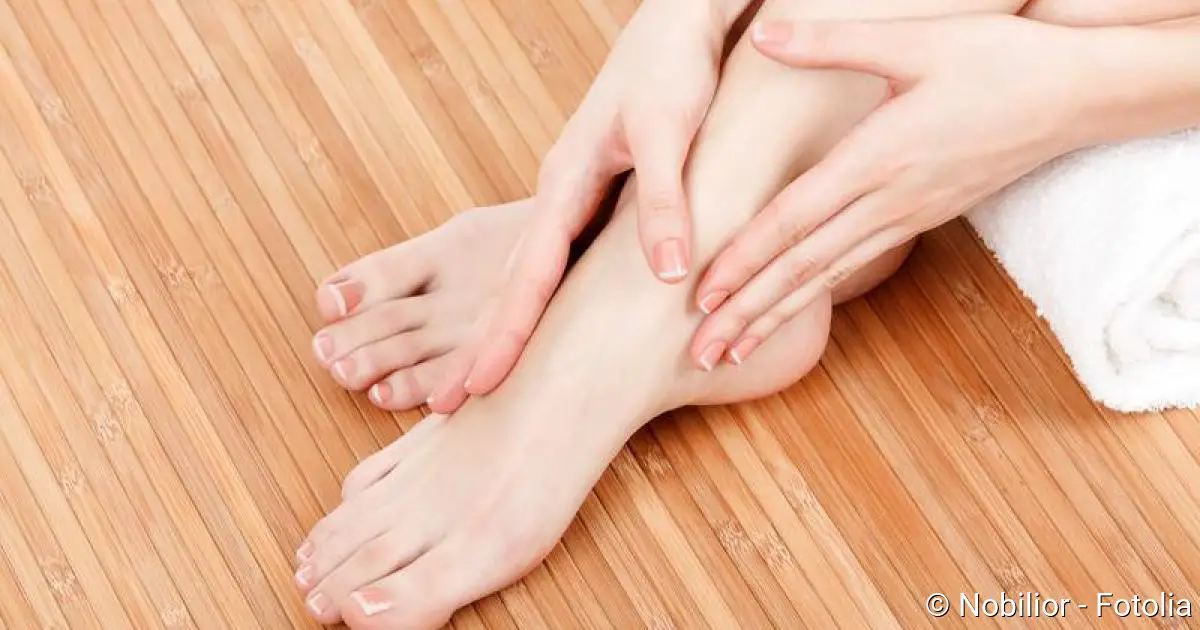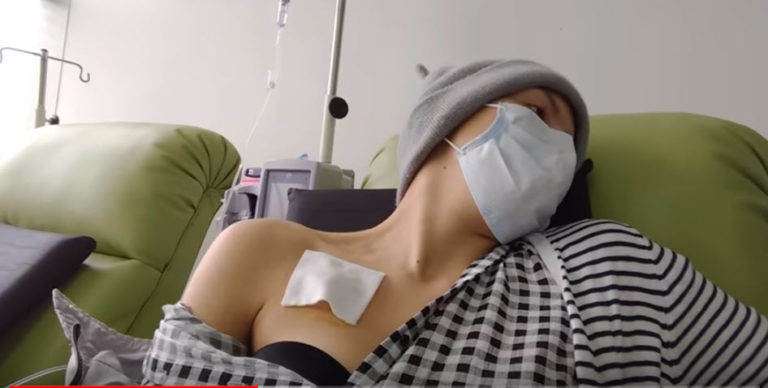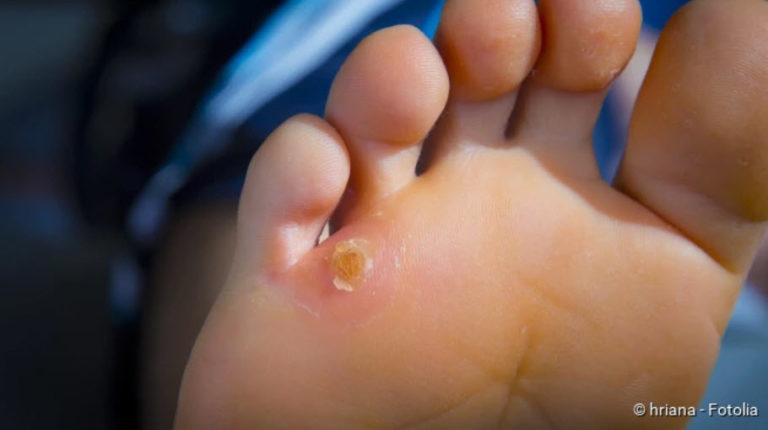Heel Spur (Calcaneal Spur): treatment, symptoms, prognosis
Heel Spur (Calcaneal Spur): treatment, symptoms, prognosis
A heel spur (calcaneal spur) is a thorn-like bone outgrowth on the heel bone. It is caused by small tendon injuries that calcify. Reasons for such injuries are usually incorrect and overloaded loads. With a heel spur, walking or standing can be very painful. Here you can read what you can do to get rid of the complaints.

Heel spur – short overview
- Description: spiky bone outgrowth, usually at the lower, front edge of the heel bone
- Treatment: Shoe insoles, cold therapy, physiotherapy, shock wave therapy, radiation, anti-inflammatory drugs, surgery
- Symptoms: stabbing pain in the rear arch of the foot when standing and walking
- Causes: Overstrain (for example through sport), foot malpositions, overweight, shortened tendons
- Prognosis: Therapy often protracted, often shows effects only within weeks or months, but surgery is usually not necessary
Heel spur – Description
A heel spur (calcaneal spur) is a thornlike bone outgrowth on the heel. The much more common form is formed from the lower, front edge of the heel bone along the sole of the foot towards the toes (plantar heel spur). The rarer, dorsal heel spur develops at the base of the Achilles tendon.
Often a heel spur does not cause any discomfort and is only discovered by chance during an X-ray. Complaints usually occur when the foot is subjected to intensive strain. This is because it can cause a small inflammation and swelling at the base of the tendon on the heel bone. It can cause severe, stabbing pain when walking or standing.
Heel spur treatment
Heel spur treatment aims to relieve acute pain and prevent future complaints. Patients need a lot of patience for the therapy: it can take several weeks or even months before the symptoms disappear completely. However, an operation is only necessary in rare cases.
Relief
The most important principle of heel spur treatment is relief. At rest, the symptoms usually improve quickly. Therefore, patients should take a break from sports and walk or stand as little as possible. It also helps to elevate the foot.
Pain medication
Often, however, relief is not enough to alleviate the pain of the heel spur. Then additional pain medication can help. Drugs that also inhibit inflammation (antiphlogistics) are particularly suitable for this purpose. These include active ingredients such as diclofenac or ibuprofen.
Cryotherapy
Cold relieves pain and inhibits inflammation. This works with ice, a cryopack or even cold spray. The repeated cold application also subsequently increases the blood circulation in the inflamed tissue, which accelerates healing. The cold therapy (cryotherapy) should be applied for 10 to 15 minutes at a time and repeated several times a day. To avoid frostbite of the skin, the skin should be protected by a thin layer of fabric.
Physiotherapy
In physiotherapeutic treatment, the large tendon plate of the sole of the foot (plantar fascia), the calf muscles and the Achilles tendon are stretched. As a side effect, the tissue is better supplied with blood through the activation, which additionally promotes healing. During the treatment, the patient learns special exercises which he can continue to perform at home.
Infiltration therapy
As part of an infiltration therapy, the doctor injects a local anaesthetic or a cortisone preparation into the painful region of the foot. The anesthetic relieves acute pain. The cortisone preparation inhibits the inflammation. Germs can easily get into the tissue during this procedure. Therefore, it should definitely be performed by an experienced doctor.
Heel spur insoles
Those who tend to a heel spur should always wear comfortable shoes. In addition, the shoes can be cleverly padded. This relieves the foot and prevents further complaints.
- Flat feet, fallen arches or hollow feet have a higher risk of developing a heel spur. However, these foot malpositions can be easily compensated with orthopedic insoles. In this way it is often possible to prevent a heel spur from developing at all.
- If there is already a lower heel spur (under the sole of the foot), insoles with a recess (perforated insoles), which are individually orthopaedically adapted, can help. Viscoelastic inserts filled with a kind of gel or wide buffer heels also help. They distribute the pressure over the entire foot and absorb shocks better.
- In the case of the rear heel spur (at the Achilles tendon) you can glue a heel cushion, pieces of felt or heel wedges into the rear toe cap for cushioning.
Shockwave therapy
During shock wave treatment, strong pressure waves are directed at the heel spur with a special device. They are supposed to irritate the tissue and stimulate blood circulation and cell metabolism. The inflammation heals faster and the pain is reduced.
To do this, the doctor first marks the pressure painful area on the foot with a pencil. Then he places the sonic head of the shock wave device on this spot. In three to five individual treatments, shock waves are emitted for about 5 to 15 minutes each.
Radiotherapy
If other measures have not been able to improve the symptoms sufficiently, a heel spur can also be treated with X-rays. The radiation dose is much lower than, for example, in the X-ray of body structures or in cancer therapy. That is why there are no known acute side effects or late effects. Within approximately three weeks, the foot is irradiated six times for a few minutes. Almost all patients are pain-free after this heel spur treatment.
Heel spur surgery
Heel spur operations are performed only very rarely. They are the last measure when all other therapeutic measures have failed. Furthermore, an operation is only possible if there is a heel spur under the sole of the foot. The surgeon notches the short foot muscles and detaches the tendon plate under the sole of the foot from the heel bone. This should relieve the tendon under the foot.
A heel spur operation is not always successful and involves risks. Wound healing disorders may occur and scar tissue may be increased. The natural protective fat pad under the heel can also be lost during surgery.
Alternative forms of treatment
Heel spur taping: Some patients also use so-called tapes to treat heel spurs. This is an elastic adhesive tape. Skin and connective tissue are moved against each other by the use of the tape. This should improve the blood supply to the tissue.
In heel spur treatment, positive effects on pain receptors, muscle and tendon attachments are often achieved in this way. For treatment, the tape is stuck from the Achilles tendon to the middle of the sole of the foot with heel spur.
Heel spur homeopathy: The remedy Hekla lava D4 is used for the homeopathic treatment of heel spurs.
Schüssler salts: Schüssler salts such as Calcium Fluoratum D12, Calcium phosphoricum D6 and Silicea D12 are said to be good for bones and tendons.
Heel spur treatment: What you can do yourself
If you have complaints caused by a heel spur, you can improve it with various exercises or prevent it from reappearing. This involves correcting foot malpositions, strengthening the foot and stretching the tendons and ligaments.
In case of acute pain, it is best to protect your feet by putting them up and cooling them. Wear proper shoes with good insoles, i.e. with a heel support and cushioning cushions. Cortisone injections are only a temporary solution. The anti-inflammatory does relieve pain. However, it can cause permanent tissue changes on the sole of the foot and thus increase the pain.
Foot muscle training
Well trained foot muscles can absorb loads and shocks better and thus relieve the tendons. Suitable exercises are, for example, walking on uneven ground such as a meadow or on the beach or picking up paper with your toes and tearing it up.
Stretching exercises for heel spur
The plantar tendon under the foot can be rotated through various exercises. Place a tennis ball under the sole of your foot and roll back and forth with strong pressure.
Another heel spur exercise is to stand on a step with the ball of your foot only, then let your heels sink down until you feel a slight stretch pain in the sole of your foot.
A heel spur can also form due to increased tension on the Achilles tendon. Regular stretching of the calves works against this.
How To Prevent A Heel Spur Condition?
Anything that takes the strain off the feet helps. Avoid overweight. Shoes with cushioning cushions are important, especially for sports with high stress on the feet. The correct running technique also plays a role. And have it clarified in good time whether you suffer from a foot malposition. A fallen or bent foot can promote the development of a heel spur.
Calcaneal spur: symptoms
Even if a heel spur can be seen in the X-ray image, it does not necessarily cause discomfort. Conversely, pain can occur even if no changes are seen in the X-ray image.
Patients usually experience severe, stabbing pain in the heel or sole of the foot. These increase when the patient leaves. They can even be so pronounced that he can only walk on tiptoe. As soon as he sits, lies down or rests his leg, the pain usually disappears again.
However, heel spur complaints are often more pronounced after a resting phase, for example when getting up in the morning. Often a pain can also be triggered by pressing on the corresponding spot on the heel.
A plantar (lower) heel spur causes pain at the inner front edge of the heel sole. In the case of the dorsal heel spur, the pressure point is in the area of the rear toe cap or at the slightly higher Achilles tendon insertion (achillodynia).
Heel spur: causes and risk factors
The calcaneal spur is caused by overloading the foot. This leads to small injuries and tears in the areas where the foot plate tendon or the Achilles tendon has grown together with the heel bone.
The micro-injuries can cause an inflammation that attracts inflammatory cells. They repair the tissue by rebuilding it. This causes small calcifications and finally a heel spur.
There are a number of factors that increase the risk of developing calcaneal spurs:
- Overweight: The heel is put under greater strain with every step.
- Professions in which you have to walk or stand a lot
- Foot malpositions such as kink-lower foot or flat foot
- Assessment
- Insufficient warming up before sport: calf muscles, tendons and ligaments are then more tensed and exert greater force on the tendon attachment at the heel.
- Older age: As you get older, the fat cushion under the heel shrinks. The tendons and bones are then less padded and are therefore more stressed.
If a heel spur is already present, it is reinforced by each additional load. So if the complaints persist for a longer period of time, the heel spur should be treated in any case.
Heel spur: examinations and diagnosis
In most cases the typical heel spur pain already suggests the diagnosis. This suspicion is confirmed if pressure on the front edge of the heel sole, in the area of the rear toe cap or at the base of the Achilles tendon causes or increases pain. The painful area is usually neither visibly swollen nor reddened.
In order to confirm the diagnosis, the foot can be x-rayed laterally. In most cases, the ossification can already be clearly seen on the X-ray image. A large calcaneal spur does not necessarily cause more severe symptoms than a small one.
Calcaneal spur (Heel Spur): course of disease and prognosis
A heel spur does not regress by itself. This is not a problem in itself because the complaints are caused by the inflammatory reaction and not by the bone outgrowth itself.
In addition to physiotherapy, custom-made insoles have proven their worth. Methods that can relieve the inflammation and thus the pain in the heel spur area are also helpful. There is shock wave therapy or the injection of growth factors. Surgery is only performed if conservative treatment no longer helps.
The inflammation can be relieved by appropriate treatment, for example with medication or physiotherapy or drugs. Then the symptoms disappear as well. In most cases, even simple relieving measures such as suitable footwear, shoe inserts against heel spurs or stretching exercises can help.
There are also other treatment options for more severe symptoms. Surgery for heel spurs is only rarely necessary.






